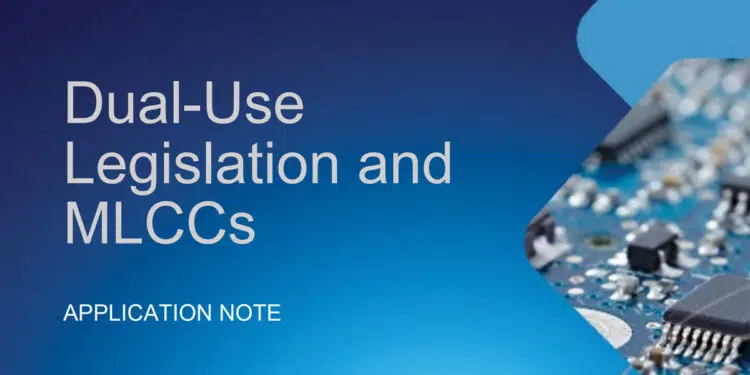Dual-use legislation is most commonly associated with pulse discharge capacitors. But it is very possible for high voltage MLCCs over 750V to fall under dual-use legislation even if the capacitor is not classified as a pulse discharge capacitor.
Knowles application note explores the details of dual-use trade controls, how to determine if your MLCCs could fall under this regulation, and what you need to do to stay in compliance.
Today, many electrical systems are demanding higher operating voltages and temperatures, along with higher capacitance values – particularly in the fast-growing area of power electronics for electric vehicles (EVs). Therefore, electrical design engineers are looking to use multilayer ceramic capacitors (MLCCs) in these applications due to their inherent low inductance and wide operating temperature range.
However, this potentially perfect component could bring manufacturers and distributers into conflict with international export law if they are not careful. In short, if your company manufacturers a product that can be used for both civilian and military purposes, your product may require further review to determine if it would be regulated under your country’s dual-use legislation laws. The penalties for breaching this regulation are severe, which means it is wise to understand what could make your application fall under dual-use regulations.
When it comes to capacitors, dual-use legislation is most commonly associated with pulse discharge capacitors. But it is very possible for MLCCs to fall under dual-use legislation even if the capacitor is not classified as a pulse discharge capacitor. This is because one part of the dual-use status guidelines, which originated from the Nuclear Suppliers Group (NSG), states that if a capacitor has a voltage rating greater than 750 V, capacitance greater than 0.25 µF, and series inductance less than 10nH, dual-use status would apply. By working closely with your suppliers and all the partners in your supply chain, you can determine if the way you will use MLCCs in your applications may fall under this regulation and manage the potential requirements of this regulation.
Read more at Knowles Application Note


































